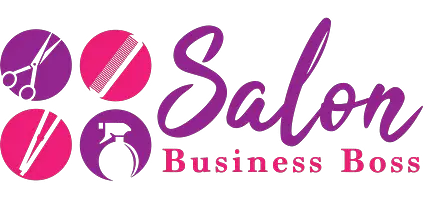Beauty salons have become a flourishing business in the modern world, catering to people’s desire for grooming and self-care. As the demand for beauty services continues to rise, entrepreneurs and investors are eyeing this industry as a potentially lucrative venture.
Yes, beauty salon business is profitable, with profit margins ranging from 2% to 17%. Factors like location, services offered, pricing strategy, and customer loyalty play a significant role. Challenges include seasonal fluctuations and rising supply costs, but effective strategies such as upselling, cost management, and staff training can enhance profitability. Embracing new technologies and maintaining a strong online presence is crucial for long-term success.
Understanding Profit Margins in Beauty Salons

Profit margins are essential indicators of a business’s financial viability and ability to thrive in the long term. For beauty salons, these margins are influenced by a plethora of factors that can either bolster or hamper profitability. First and foremost, the location of a salon plays a critical role in determining profit margins. Salons situated in high-traffic areas with a clientele of higher disposable income tend to charge premium prices, resulting in more substantial profit margins.
The target market and services offered are significant contributors. A salon that caters to a diverse range of high-demand services, such as hairstyling, makeup application, skincare treatments, and nail services, is likely to attract a larger customer base and generate higher revenues, thereby positively impacting profit margins.
Pricing strategy also plays a delicate balancing act in maximizing profitability. Setting competitive prices while maintaining a healthy profit margin requires strategic pricing decisions tailored to the target market’s preferences and the competition.
Operational efficiency is yet another key determinant of profit margins. Salons that effectively manage resources, reduce wastage, minimize idle time, and optimize staff schedules can achieve cost savings and ultimately bolster their profit margins.
In the beauty salon industry, profit margins can fluctuate between 2% to 17%, highlighting the potential range of profitability. However, the average profit margin typically hovers around 8% to 12%, indicating that while beauty salons can be profitable ventures, success relies heavily on effective management, customer engagement, and a well-planned strategy. Understanding and optimizing these factors are essential for beauty salon owners seeking to maintain a healthy and sustainable business in a competitive market.
Read more about: Profitable Coiffures: Evaluating Average Profit Margins for Hair Salons
Factors Influencing Profit Margins
1. Location and Demographics:
The geographic location of a beauty salon plays a significant role in determining its profitability. Salons strategically situated in high-footfall areas with a well-off clientele often have the advantage of charging premium prices, leading to higher profit margins. These locations tend to attract more potential customers seeking premium services and are willing to pay a premium for convenience and quality.
On the other hand, beauty salons located in less desirable areas may face more intense competition and a customer base with lower spending power. As a result, they might need to lower their pricing to remain competitive, potentially leading to lower profit margins.
Understanding the demographics of the surrounding area is also crucial. A salon that aligns its services with the preferences and demands of the local population can better cater to their needs, contributing to increased customer loyalty and profitability.
2. Services Offered:
The range of services a beauty salon provides directly impacts its profit margins. Salons offering a diverse array of high-demand services, such as hair styling, makeup application, skincare treatments, and nail services, are more likely to attract a larger and more diverse customer base.
By offering a comprehensive menu of services, salons can cater to a wide range of preferences and needs, increasing the likelihood of repeat business and customer loyalty. Each service provided contributes to the salon’s revenue stream, which, in turn, can improve overall profit margins.
Salons that stay abreast of current beauty trends and continuously update their service offerings to meet evolving customer demands position themselves for sustainable growth and higher profitability.
3. Pricing Strategy:
Finding the right pricing strategy is crucial for maintaining a profitable beauty salon business. Underpricing services may initially attract customers, but it can lead to reduced profits in the long run, making it difficult for the salon to cover its operational costs and invest in growth.
Conversely, overpricing services might deter potential clients, leading to a decline in foot traffic and revenue. Striking the right balance between competitive pricing and maintaining a healthy profit margin is essential.
A well-thought-out pricing strategy should consider the salon’s target market, the perceived value of services offered, and the pricing practices of competitors. Regularly evaluating and adjusting pricing based on market dynamics and customer feedback can help optimize profit margins and keep the salon financially sustainable.
4. Operational Efficiency:
Operational efficiency is a critical factor in maximizing a beauty salon’s profitability. Efficiently managing resources, such as staff, inventory, and time, can lead to significant cost savings and improved profit margins.
Optimizing staff schedules ensures that the salon operates at maximum capacity during peak hours while minimizing idle time during quieter periods. This not only enhances customer service but also helps maximize staff productivity and revenue generation.
Managing inventory effectively prevents overstocking and wastage, reducing unnecessary expenses. A well-organized inventory system ensures that salon supplies are always available when needed, avoiding last-minute rush purchases and potential revenue loss.
Streamlining processes and using technology to automate routine tasks can also contribute to operational efficiency. For example, appointment booking systems, digital invoicing, and customer management software can save time and resources.
5. Customer Loyalty and Marketing:

Fostering customer loyalty is a powerful driver of profitability in the beauty salon industry. Repeat customers provide a stable revenue stream and are more likely to spend more on additional services and products.
Satisfied customers also become brand advocates, sharing positive experiences with friends and family, leading to valuable word-of-mouth marketing. This can significantly reduce marketing costs while attracting new clients who trust personal recommendations.
Effective marketing initiatives that highlight the salon’s unique selling propositions can also boost profit margins. Engaging social media campaigns, loyalty programs, and targeted promotions can attract new customers and incentivize existing ones to try new services or products.
Investing in exceptional customer service and creating a welcoming and comfortable ambiance can further enhance customer loyalty and satisfaction. Prioritizing customer feedback and addressing concerns promptly helps build trust and long-term relationships, ultimately contributing to the salon’s profitability.
Read more about: Radiate Excellence: Designing a Salon Marketing Plan
Challenges Affecting Profitability
Despite the potential for profitability, beauty salon businesses face several challenges that can impact their financial performance.
1. Seasonal Fluctuations:
Beauty salon businesses often experience fluctuations in demand throughout the year. For instance, there may be increased bookings for weddings and proms during specific months, while foot traffic might decline during quieter periods. To maintain consistent profit margins, salon owners must plan for these seasonal variations. Implementing marketing promotions tailored to specific seasons or events can help attract customers during slow periods, while effective appointment scheduling ensures optimal staff utilization during peak times.
2. Labor Costs:
Labor costs, encompassing staff salaries and benefits, pose a significant challenge for salon owners. Attracting and retaining skilled professionals in a competitive market can impact profitability. High employee turnover can disrupt salon operations, leading to increased recruitment and training expenses. To manage labor costs effectively, salons should invest in employee development, offer competitive remuneration, and create a positive work environment to retain talent and enhance service quality.
3. Competitive Landscape:
The beauty industry is saturated with numerous salons vying for customer attention. To remain profitable, salons must stand out from the competition by offering exceptional services and memorable customer experiences. Creating a unique brand identity, fostering customer loyalty through personalized interactions, and providing value-added promotions can attract and retain customers amidst fierce competition.
4. Rising Supply Costs:
The cost of beauty products and equipment can fluctuate due to market dynamics and inflation. Salon owners must proactively manage these costs to protect profit margins. Negotiating favorable supplier contracts, optimizing inventory management to reduce waste, and periodically reassessing pricing strategies are effective approaches to mitigate the impact of rising supply costs.
5. Technological Advancements:
The beauty industry continually evolves with technological advancements that impact salon operations and customer preferences. Embracing new technologies, such as booking and management software, virtual consultations, and innovative beauty treatments, can enhance efficiency, attract tech-savvy customers, and maintain competitiveness. Ignoring technological trends can hinder a salon’s growth potential and profitability, making it essential for salon owners to stay informed and adapt to industry developments.
Strategies for Enhancing Profitability
Despite the challenges, there are various strategies that beauty salon owners can employ to improve profitability and achieve sustainable growth.
1. Upselling and Cross-Selling:

Encouraging customers to explore additional services or complementary products during their salon visit can significantly increase the overall revenue per visit. Effective upselling and cross-selling techniques involve understanding the customer’s needs and preferences and offering relevant, value-added suggestions. By recommending related treatments or products that complement their initial choice, the salon can not only enhance the customer’s experience but also boost profit margins by maximizing each transaction.
Read more about: Unlocking Potential: Hair and Beauty Salon Insights
2. Loyalty Programs and Referral Incentives:
Implementing loyalty programs and referral incentives can be powerful tools for cultivating customer loyalty and attracting new clients. Loyalty programs, offering exclusive rewards, discounts, or free services based on customer spending or visit frequency, encourage repeat business and contribute to increased revenues. Similarly, referral incentives motivate satisfied customers to spread the word about the salon to friends and family, leading to organic growth in the customer base. These initiatives not only build trust and rapport with existing clients but also act as cost-effective marketing strategies to drive profitability.
3. Cost Management and Inventory Control:
Analyzing expenses and optimizing inventory management are fundamental aspects of enhancing profitability. Salon owners should regularly assess operating costs, identifying areas where expenses can be minimized without compromising service quality. Efficient inventory control prevents overstocking, wastage, and outdated products, leading to cost savings and improved profit margins. Implementing smart inventory tracking systems and negotiating favorable supplier agreements can further contribute to effective cost management.
4. Staff Training and Development:
Investing in ongoing staff training and skill development is a crucial investment in the salon’s success. Well-trained employees provide superior service, resulting in heightened customer satisfaction and loyalty. Satisfied customers are more likely to return for future services and recommend the salon to others, generating a positive impact on profitability. By empowering employees with the latest industry trends, techniques, and customer service strategies, the salon can position itself as a reputable and sought-after destination for beauty services, ultimately leading to increased revenue and profitability.
5. Online Presence and Marketing:
Creating a robust online presence is essential in today’s digital landscape. Establishing a professional website and actively engaging with potential customers on social media platforms can significantly expand the salon’s reach. Digital marketing initiatives, such as targeted advertisements and promotions, help attract new customers and retain existing ones. A strong online presence increases brand visibility, builds trust, and positions the salon as a reputable establishment, thus contributing to its overall profitability by driving more foot traffic and increasing service bookings.
Conclusion
The profitability of beauty salon businesses can vary significantly, with profit margins typically ranging from 2% to 17%. To achieve sustainable success, salon owners must carefully consider factors such as location, services offered, pricing strategy, operational efficiency, and marketing efforts. By navigating the challenges and implementing effective strategies, beauty salons can capitalize on the growing demand for beauty services and establish themselves as profitable ventures in the competitive beauty industry.
Frequently Asked Questions

1. Can staff training contribute to salon profitability?
Investing in staff training and development can lead to improved service quality, higher customer satisfaction, and increased customer loyalty, all of which positively impact profitability.
2. How can I implement an effective pricing strategy?
A successful pricing strategy involves balancing competitive pricing while ensuring a healthy profit margin. Conduct market research, consider the perceived value of your services, and analyze competitors’ pricing to make informed decisions.
3. What role does customer feedback play in salon profitability?
Customer feedback is invaluable for improving salon operations and services. Addressing customer concerns and making necessary improvements can lead to enhanced customer satisfaction and, ultimately, increased profitability.
To learn more on how to start you own salon checkout my startup documents here.
Please note that the contents of this blog are for informational and entertainment purposes only and should not be construed as legal advice. Any action taken based on the information provided in this blog is solely at your own risk. Additionally, all images used in this blog are generated under the CC0 license of Creative Commons, which means they are free to use for any purpose without attribution.

About the author. Entrepreneur and Salon Business Fan.
Hi! I am Shawn and I am a happy individual who happens to be an entrepreneur. I have owned several types of businesses in my life from a coffee shop to an import and export business to an online review business plus a few more and now I create online salon business resources for those interested in starting new ventures. It’s demanding work but I love it. I do it for those passionate about their business and their goals. That’s why when I meet a salon business owner, I see myself. I know how hard the struggle is to retain clients, find good employees and keep the business growing all while trying to stay competitive.
That’s why I created Salon Business Boss: I want to help salon business owners like you build a thriving business that brings you endless joy and supports your ideal lifestyle.

